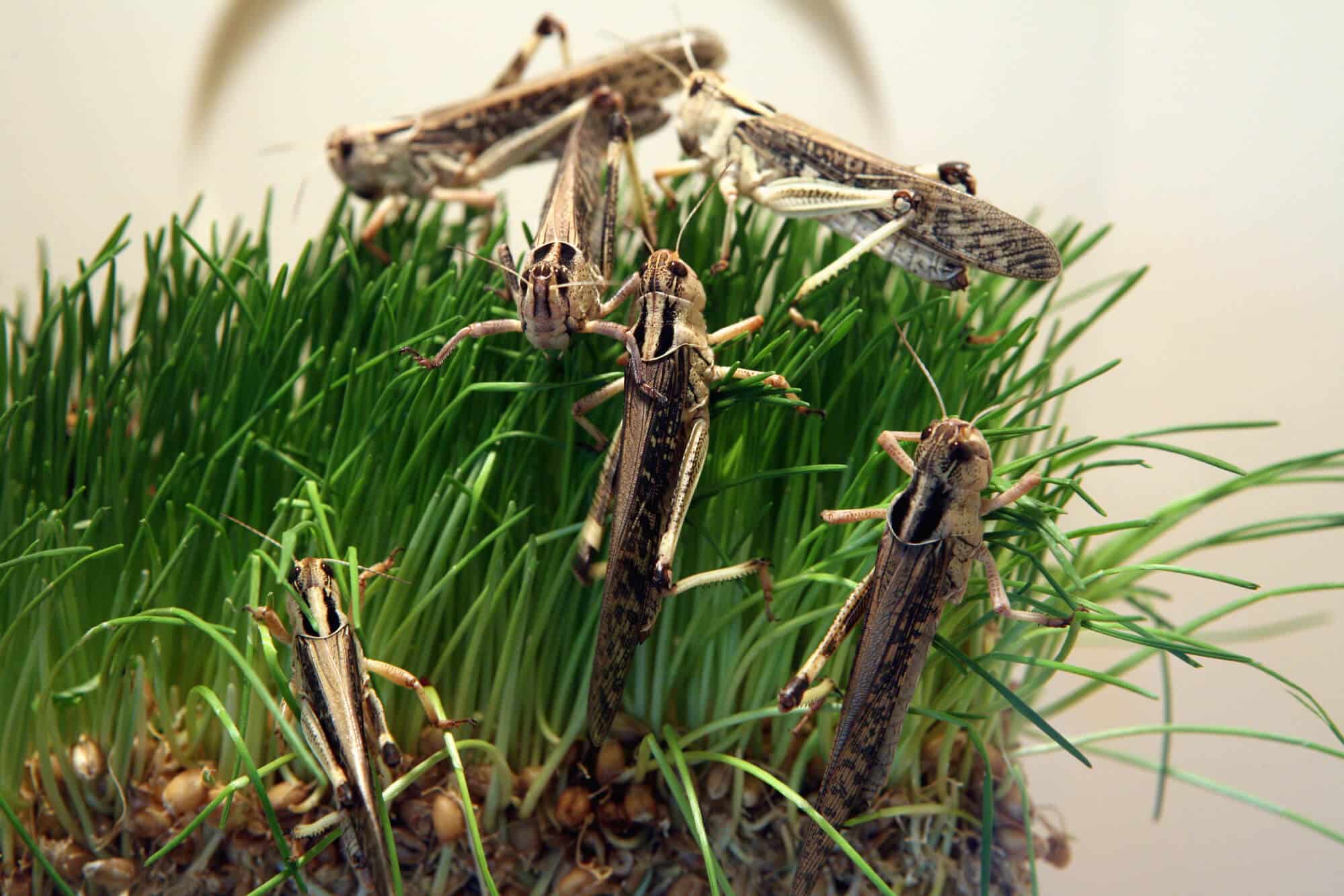Researchers at Tel Aviv University found a connection between a bacterium in the grasshopper's gut and the destructive phenomenon of swarming and migration

"Swarms of locusts that destroy crops and cause severe hunger are a known phenomenon from ancient times to the present day. In the last three years, the plague of locusts has affected large areas in Africa, India and Pakistan, and there are estimates that the phenomenon is expected to increase due to climate change." Explainer Explainer Prof. Amir Ily from the School of Zoology. "A locust swarm is formed when grasshoppers, which for the most part live alone in nature, gather together and begin to migrate, but the reasons for this behavior are still not sufficiently understood, and man is still powerless against it. Studies in recent years have shown that the microbiome may affect the behavior in general and the social behavior in particular of the host animal, among others among insects. We are investigating the possibility that the microbiome, that is, the population of bacteria in the gut of the grasshopper, has a role in the swarming that creates the locust swarm, and we have even published several articles on the subject. In the current study, we took the test one step further."
The research team led by Prof. Amir Ili and doctoral student Omar Lavi discovered that the population of intestinal bacteria (the microbiome) of a grasshopper living alone changes significantly when it joins the flock. The main finding is a bacterium known as Weissella which is hardly observed in the intestine of a single grasshopper but becomes dominant in the microbiome upon joining the flock. In addition, the researchers built a mathematical model that proves that swarming is 'viable' for the bacterium from an evolutionary point of view, since it allows it to spread and infect a large number of additional grasshoppers. According to the researchers, "Our findings do not prove that the bacterium is responsible for the phenomenon of swarming and migration - that is, for the creation of locusts, but it is likely that it plays a role in the phenomenon, and this is a new hypothesis that has never been raised to date. We hope that the new insight will form the basis for developing measures to prevent or reduce the locust phenomenon that harms masses of people, animals and plants in the world."
Also participating in the study were Danish Prof. Lilac Ohad Levin-Epstein and Yonatan Bendt from the School of Plant Sciences and Food Safety, Prof. Uri Gofna from the Semonis School of Biomedical Research and Cancer Research, and Dr. Eran Gefen from Haifa-Oranim University. The research is a beautiful example of successful interdisciplinary collaboration: researchers of insect behavior and physiology (Ili, Gefen), researchers of microbiology and bacteria (Gofna) and experts in computer evolutionary models (Hadani). The article was published in the journal Environmental Microbiology.
The cheering is worthwhile
As part of the study, the researchers raised grasshoppers of the desert locust type in the laboratory, individually and in groups. They collected feces from grasshoppers that were raised in isolation, used it to characterize the population of their gut bacteria, and then added them to a large group of about 200 grasshoppers. In a repeat sampling, 7 days later, a significant change was found in the microbiome of the grasshoppers that were raised individually and added to the group. Omar Lavi: "The main change we found was in the distribution of a bacterium called weissella. This bacterium, which was almost completely absent from the microbiome of the single grasshopper, became dominant in the microbiome after the grasshopper was added to the flock."
In the next step, the researchers built a mathematical model that showed that swarming is "viable" for the bacterium from an evolutionary point of view, because it allows it to spread and infect more grasshoppers. Due to the evolutionary advantage demonstrated in the model, the researchers put forward a new hypothesis, that the bacterium may play a role in the behavior that creates swarming among the grasshoppers. In other words, the bacteria may in some way encourage the host grasshopper to change its behavior and approach other grasshoppers.
Prof. Ily concludes: "Our research makes an important contribution to understanding the phenomenon of swarming grasshoppers and the creation of locust swarms - one of the leading causes of hunger in the world, from ancient times to the present day. In the study we found a significant change in the composition of the gut bacteria population in grasshoppers that go from a single event to a flock event. The main change is the enormous culture of a bacterium known as weissella, which is hardly observed in the microbiome of the individual grasshopper, but takes over the intestinal bacterial population when the grasshopper joins the herd. We also built a mathematical model that proves that the bacterium has an evolutionary 'interest' in the surrogate grasshopper joining the flock. Although the findings do not prove that the bacterium is responsible for the phenomenon of flaming and migration - that is, for the creation of locusts, they indicate a high possibility that it has a role in the phenomenon, and this is a new hypothesis that has never been raised until now. We hope that the new insight will form the basis for developing measures to prevent or reduce the locust phenomenon that harms masses of people, animals and plants in the world."
More of the topic in Hayadan:
